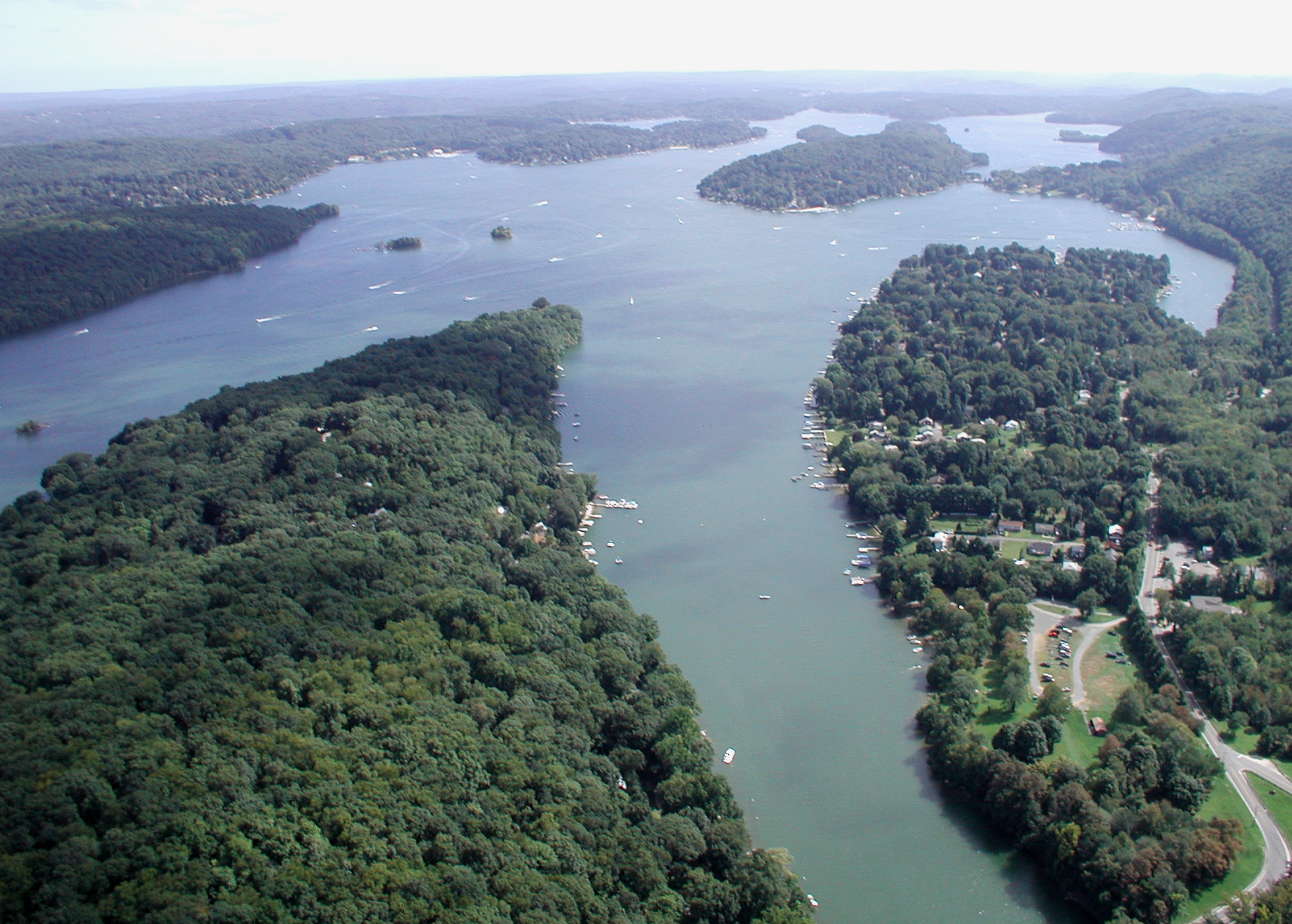Lake Symposium 2025
-
Management Issues of Connecticut Lakes
A Fall Science at Night seminar series for the public, students and scientists interested in local lake conservation and management.
Based on the conversation started in 2019 -21, stakeholders this year will discuss Lake Management topics that impact our regional lakes.
The event is virtual and free but registration is required:
View Presenter Biographies and event abstracts below
Co-sponsored by Connecticut Federation of Lakes
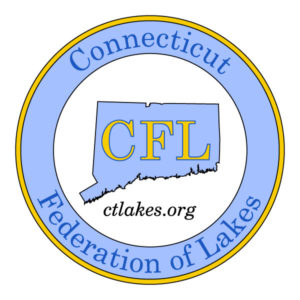
“Monitoring Water Quality in Our Lakes”
7:00 pm – Larry Marsicano, Brawley Consulting Group LLC., WCSU Limnology Instructor, Welcome address and speaker introduction.
7:10 pm – James Fischer, Connecticut Federation of Lakes. Connecticut Federation of Lakes (CFL), a statewide organization dedicated to protecting and enhancing Connecticut’s lakes for recreation, ecology, and local communities
7:20 pm – Mary Becker, Supervising Environmental Analyst, Water Monitoring and Assessment Program, and Melissa Czarnowski, Stream Connectivity Monitoring Project Lead, CT DEEP.. CT LakeWatch Volunteer Program and CT Web-based Lakes Reporting Application.
7:50 pm - Questions to speakers from audience and discussion
8:00 pm – Volunteer Monitoring Experiences. Four lake communities who have integrated volunteer lake monitoring into their lake management
Jeff Arpin, Amston Lake Association
Keith Suchy, Alexander Lake Association
Peter Neely, Twin Lakes Association
Henry Moore, Woodridge Lake Property Owners Association
8:45 pm - Questions to speakers from audience and discussion
“Volunteers Help Assess Connecticut Fisheries”
7:00 pm – Larry Marsicano, Brawley Consulting Group LLC., WCSU Limnology Instructor, will introduce the topic and speaker.
7:05 pm – Meghan Lally, Environmental Analyst III/PFAS Lead, CT DEEP, “An Introduction to PFAS and what our lake fish can tell us about the presence of PFAS in our water.”
7:30 pm - Questions from Audience
7:40 pm – Mike Beauchen, Supervising Fisheries Biologist, Bureau of Natural Resources/Fisheries Division, Fisheries Biologist, CT Department of Energy and Environmental Protection, Fisheries Division, “The Trophy Fish Award Program and Fish Management in Connecticut.”
8:05 pm - Questions from Audience
8:15 pm – Andrew Ransom, Fisheries Biologist, CT Department of Energy and Environmental Protection, Inland Fisheries Division, Trail Cameras and Anglers monitor and help evaluate the status of fisheries in CT.
8:40 pm – Questions from Audience
“The Jefferson Project”
7pm – Larry Marsicano, Brawley Consulting Group LLC., WCSU Limnology Instructor, will introduce the topic and speakers.
7:05 pm –Anthony P. Praino, WCSU Atmospheric and Climate Sciences Adjunct “ An Overview of the Jefferson Project.”
7:50 pm - Questions from Audience
8:00 pm – Vincent Moriarty, Senior Research Scientist, Rensselaer Polytechnic Institute, “Jefferson Project and HABS.”
8:45pm – Questions from Audience
8:55pm – Theodora Pinou, Western Connecticut State University, Professor of Biology. Closing remarks and next steps.
Presenter Biographies and Event Abstracts
Representative Experts and Speakers
Theodora Pinou, Western Connecticut State University, Professor of Biological and Environmental Sciences, MS in Integrative Biological Diversity Program Director and Coordinator.
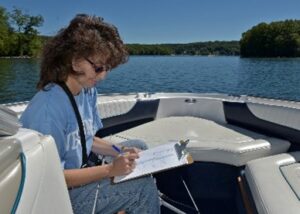
Pinou is Department Chair and Professor of Biology Sciences at WCSU. She is also a Curatorial Affiliate in Vertebrate Zoology at the Peabody Museum of Natural History at Yale University. She received her BA, MA, and Ph.D at New York University in Biology, with a focus in vertebrate evolution and ecology.
Larry Marsicano, Brawley Consulting Group LLC., WCSU Limnology Instructor, Welcome address and speaker introduction
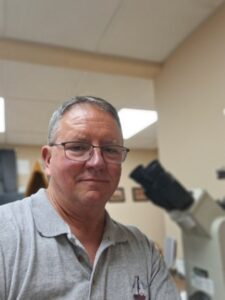
Larry obtained his B.A. from Western Connecticut State University in 1988 and his M.A. from Connecticut College in 1993. He managed the Freshwater Ecology Laboratory at Connecticut College for Dr. Peter Siver from 1990 to 1997 which specialized in paleolimnology and regional lake water quality studies. His publications can be viewed at the Silica Secchi Disk website. In 1998 he was hired by the Candlewood Lake Authority and in 2003 became the Executive Director of that public lake management agency, the largest lake in Connecticut. He held that position until 2017 when he became a Principal Partner at Aquatic Ecosystem Research, LLC. He is now the Senior Limnologist for Brawley Consulting Group LLC, and teaches limnology to graduate students in the WCSU MS in Integrative Biological Diversity Program.
Connecticut Federation of Lakes (CFL): A Voice for Our Lakes
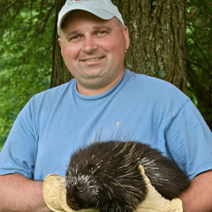
Abstract: At this session, James Fischer will introduce the Connecticut Federation of Lakes (CFL), a statewide organization dedicated to protecting and enhancing Connecticut’s lakes for recreation, ecology, and local communities. The presentation will highlight CFL’s core focus areas—including invasive species management, water quality protection, and advocacy for sound policies—while sharing examples of current initiatives. Attendees will also be invited to participate in a statewide survey that will help shape future priorities for lake conservation and community engagement.
James Fischer, Research Director, White Memorial Conservation Center, Inc.. President, Connecticut Federation of Lakes (CFL).
Mary Becker, Supervising Environmental Analyst, Water Monitoring and Assessment Program, CT DEEP

Mary Becker is a Supervising Environmental Analyst in the Water Monitoring and Assessment Program with the Connecticut Department of Energy and Environmental Protection (DEEP). She has over 20 years of experience at DEEP with work focused on bioassessment, computational ecology and development of open source tools to support environmental management of aquatic resources. She received her BA and MA degrees from Clark University in Environmental Science and Policy and MS in Digital Mapping from the University of Kentucky.
Connecticut State Lake Watch Volunteer Program & Connecticut Web-Based Lakes Reporting Application
Abstract: The Connecticut Lake Watch network is a statewide volunteer (i.e., community science) water quality monitoring program coordinated by the DEEP Water Monitoring and Assessment Program (WMAP) as part of the larger Connecticut Volunteer Water Monitoring Program. Connecticut Lake Watch participants are trained to monitor lake or pond water clarity using a Secchi disk and thermometer. Monitoring ideally occurs weekly from early spring until fall. In addition, volunteers are trained to identify and report algal blooms that could lead to unsafe recreation conditions. The data collected can be used to guide local lake management efforts, inform CT DEEP water quality assessments, and evaluate trends in lake and water quality statewide over time. The raw data is synthesized into reports for individual lakes and available through a web-based mapping application. The mapping application also provides lake reports for data collected by WMAP as well as information on lake shoreline land cover and development. Come learn more about CT Lake Watch and how to participate!
Melissa Czarnowski, Volunteer Monitoring Coordinator, Water Monitoring and Assessment Program, CT DEEP.
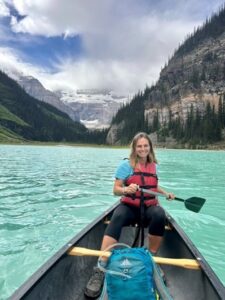
Melissa received her BS in Natural Resources with a concentration in Climate and Water Resources from the University of Connecticut in 2014. She has worked with the Water Monitoring and Assessment Program of the Connecticut Department of Energy and Environmental Protection for 9 years. Her main responsibilities include overseeing the stream connectivity program, streamflow regulations, the diatom program, and the volunteer water monitoring program, as well as assisting in lake surveys and macroinvertebrate sampling.
Connecticut State Lake Watch Volunteer Program & Connecticut Web-Based Lakes Reporting Application
Abstract: The Connecticut Lake Watch network is a statewide volunteer (i.e., community science) water quality monitoring program coordinated by the DEEP Water Monitoring and Assessment Program (WMAP) as part of the larger Connecticut Volunteer Water Monitoring Program. Connecticut Lake Watch participants are trained to monitor lake or pond water clarity using a Secchi disk and thermometer. Monitoring ideally occurs weekly from early spring until fall. In addition, volunteers are trained to identify and report algal blooms that could lead to unsafe recreation conditions. The data collected can be used to guide local lake management efforts, inform CT DEEP water quality assessments, and evaluate trends in lake and water quality statewide over time. The raw data is synthesized into reports for individual lakes and available through a web-based mapping application. The mapping application also provides lake reports for data collected by WMAP as well as information on lake shoreline land cover and development. Come learn more about CT Lake Watch and how to participate!
Meghan Lally, Environmental Analyst III, Bureau of Water Protection and Land Reuse, CT DEEP
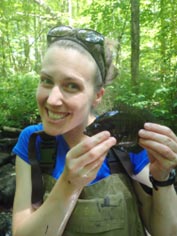
Ms. Lally is the PFAS Coordinator for the Environmental Quality branch of the Connecticut Department of Energy and Environmental Protection (CT DEEP) and the PFAS Lead for the CT DEEP Remediation Division. Prior to assuming this role in 2023, she worked for over a decade in the CT DEEP Monitoring and Assessment Program as the field lead for fish community and fish tissue contaminant analysis projects, including PFAS investigations, and served as the agency’s Volunteer Water Monitoring Coordinator, overseeing a statewide network of several hundred citizen scientists. Prior to state service, Ms. Lally held environmental positions in the nonprofit, consulting, and academic sectors. Outside of work, Ms. Lally serves as the Vice Chair of the Town of Andover’s Inland Wetlands & Watercourses Commission and volunteers with the Andover Lake Management Association (ALMA). Meghan holds an undergraduate degree in Environmental Science and a graduate degree in Natural Resource Management and Engineering, both from the University of Connecticut.
An Introduction to PFAS, and What Our Lake Fish Can Tell Us About The Presence of PFAS in Our Water.
Mike Beauchene, Supervising Fisheries Biologist, Bureau of Natural Resources/Fisheries Division, CT DEEP.

Mike began his career in 1986 as a high-school volunteer working on Atlantic salmon smolt emigration on Sandy Brook and has been hooked on fisheries ever since. After graduating with a MS in Natural Resource Management, Mike worked for Project SEARCH, a National Science Foundation Grant co-administered by the DEEP and the former Connecticut Children’s Museum, which provided equipment and training to high school teachers covering physical, chemical, and biological monitoring of rivers/streams. Mike worked within the DEEP Water Quality Monitoring Program for 15 years where he developed the ongoing macroinvertebrate River Bioassessment Program. Currently in the Fisheries Division Mike supervises staff of the Connecticut Aquatic Resources Education (CARE) program, which introduces fishing to over 5,000 people annually as well as the newly created Urban Fishing Coordinator. Mike is a life-long resident of Barkhamsted where he lives with his family and dog Ranger.
The Trophy Fish Award Program & Fish Management in Connecticut.
Abstract: One of the most important aspects of being a fisheries biologist is evaluating angler use of a resource. Typically, this is done by physically going to a waterbody to count anglers at predetermined times and interviewing them. This method is effective at capturing snapshots of time at each location and interacting with anglers in person. These angler interviews allow for determination of catch rates, discussing opinions on current management and regulations, and allow for face-to-face conversations about the general fishing experience. However, it is time consuming and often expensive. New technologies and the emerging popularity of citizen science give resource managers alternative options. For example, trail cameras placed at boat launches allow for near 100% monitoring of these access areas. The addition of an option for anglers to voluntarily report catch rates is a good way to supplement this, however results and cooperation can be inconsistent. The CT DEEP Fisheries Division conducted a novel test of this remote angler survey style in 2025, and initial results suggest this combination is effective and cost efficient, but is not a good replacement for in-person interviews.
Andrew Ransom, Fisheries Biologist, CT Department of Energy and Environmental Protection, Fisheries Division.
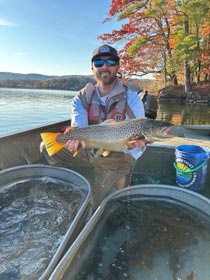
Drew is a Fisheries Biologist with the CT DEEP Fisheries Division based out of Watertown. He helps to monitor trout and other coldwater fish species in streams and lakes across the state, as well as conducting statewide angler surveys on open water and during the ice season.
Trail Cameras and Anglers Monitor and Help Evaluate The Status of Fisheries in Connecticut.
Abstract: One of the most important aspects of being a fisheries biologist is evaluating angler use of a resource. Typically, this is done by physically going to a waterbody to count anglers at predetermined times and interviewing them. This method is effective at capturing snapshots of time at each location and interacting with anglers in person. These angler interviews allow for determination of catch rates, discussing opinions on current management and regulations, and allow for face-to-face conversations about the general fishing experience. However, it is time consuming and often expensive. New technologies and the emerging popularity of citizen science give resource managers alternative options. For example, trail cameras placed at boat launches allow for near 100% monitoring of these access areas. The addition of an option for anglers to voluntarily report catch rates is a good way to supplement this, however results and cooperation can be inconsistent. The CT DEEP Fisheries Division conducted a novel test of this remote angler survey style in 2025, and initial results suggest this combination is effective and cost efficient, but is not a good replacement for in-person interviews.
Anthony P. Praino, IEEE Climate Community & Life Senior Member, Chair Emeritus, AMS Board for Private Sector Meteorologists, AMS Board on Higher Education, WCSU Atmospheric and Climate Sciences Adjunct.
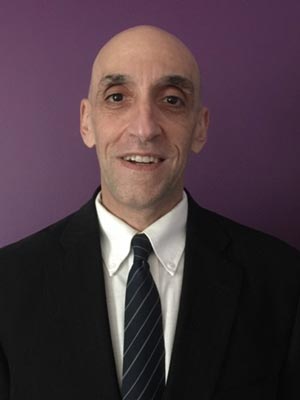
Anthony is the Chief Engineer and Meteorologist on the Jefferson Project research team where he leads the systems and infrastructure engineering as well as conducting research and development in advanced modeling, sensing and IoT capabilities for water resource and environmental management. Anthony is adjunct faculty member at Western Connecticut State University and an adjunct research scientist at the Atmospheric Sciences Research Center at the State University of New York at Albany. His industry experience includes over 35 years at IBM Research where his research and development focused on applications for clients in multiple industries as well as IBM’s weather, climate development strategy. Anthony was one of the founders of the Deep Thunder environmental modeling system, one of IBM’s 100 icons of progress. Anthony is an IEEE senior life member and a member of the AGU and the American Meteorological Society where he serves on several boards and committees as well mentoring undergraduate and graduate students and career professionals. Anthony’s research interests include climate, weather, water, environmental science, numerical modeling, instrumentation and high performance computing.
The Jefferson Project: Using advanced methods to understand, detect, and predict Harmful Algal Blooms
The Jefferson Project represents a pioneering initiative aimed at understanding issues affecting water quality in freshwater systems. Harmful algal blooms (HABs) are aggregations of cyanobacteria that threaten the quality of many water bodies. The dynamic nature of these events can make them challenging to monitor using traditional sensor technology. To address these technical challenges, the Jefferson Project has developed methods to detect and predict HABs through the integration of advanced methodologies and cutting-edge technologies. This talk will explore the multifaceted approach employed in the project, which combines high-frequency sensors, traditional in-situ water quality monitoring, and novel modeling techniques to assess the dynamics of algal blooms in freshwater ecosystems. We will discuss the development of a comprehensive data framework that enables real-time monitoring of environmental conditions and algal growth, facilitating early detection and timely intervention strategies. By enhancing our understanding of the factors driving HABs, the Jefferson Project aims to inform management practices and policy decisions, ultimately contributing to the protection of aquatic ecosystems and public health.
Vincent Moriarty, Senior Research Scientist, Rensselaer Polytechnic Institute, NY.
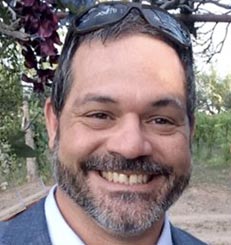
Vince is a PhD student in the multidisciplinary sciences graduate program at Rensselaer and a Senior Research Engineer with the Jefferson Project. He received his MS in marine biology from Northeastern University and spent 10 years working in French Polynesia researching coral reef ecology and biology as part of the Moorea Coral Reef LTER (Long Term Ecological Research) program. His current research focuses on understanding the factors regulating the formation of harmful algal blooms (HABs), as well as potential mechanisms driving the aerosolization of cyanotoxins associated with HABs. His research draws on a diverse skill set in high-frequency sensing, remote sensing, modeling, and surveys.
Jeff Arpin, Amston Lake Association
Jeff Arpin is the Amston Lake Health Committee chairman since 2022 and leads a team of 10 residents and works with specialists in the care of our beautiful private Amston Lake in Amston and Hebron, CT. With an education in Engineering, Jeff works with the committee to understand the lake’s health through the use of data collection, analysis and expert consultants. The Committee was established in 2017 by a 9-member Board of Directors (BOD) to better understand our lake’s health, to provide recommendations to the BOD, and to educate our district residents on our current and past lakes health.
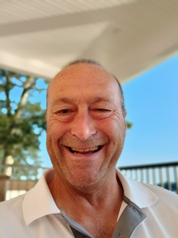
Keith Suchy, Alexander Lake Association
Keith Suchy oversees volunteer monitoring activities at Alexander Lake, located in Killingly, Connecticut. Alexander Lake in an oligotrophic / low algal productivity lake with Secchi disk reading generally exceeding 6 meters. Nonetheless, lake wide algal blooms were experienced in the early to mid-2010s and smaller localized blooms have been observed in recent years. Keith will discuss Alexander Lake and the volunteer monitoring efforts that occur there in conjunction with monitoring by environmental consultants.
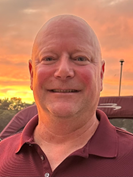
Peter Neely, Twin Lakes Association
Peter and Kathy Neely were the volunteer water quality monitors on East Twin Lake in Salisbury, CT for 5 years (2018 to 2022). Data and water samples collected were provided to environmental consultants and laboratories for analyses. Those were used to assess the health of the lake and any trends or changes that might be related to ongoing lake management efforts (e.g., plant management). Peter will discuss his experiences providing this service for his community.
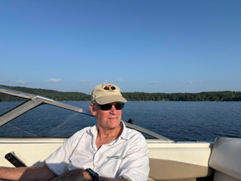
Henry Moore, Woodridge Lake, Goshen, CT
Henry served as co-chair, then chair of the Boating Committee for the 385-acre Woodridge Lake beginning in 2000. Upon merging with the Lake & Dam Committee (LDC), he served as chair for about 7 years before being elected to the Board of Directors, where he is about to begin his 8th year.
During Henry’s tenure as chair of LDC, the community of 785 member lots struggled to accept herbicides as the appropriate solution for weed control. Membership approved a program that provided for herbicide use to reduce the weeds to a level that Grass Carp could maintain.
Henry has been collecting water samples monthly for several years and has accumulated experience that may be helpful to others.
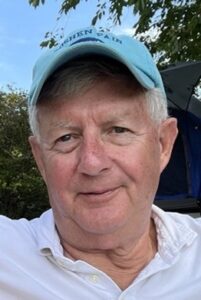
Management Issues of Connecticut Lakes
A Fall Science at Night seminar series for the public, students and scientists interested in local lake conservation and management.
Based on the conversation started in 2019 -21, stakeholders this year will discuss Lake Management topics that impact our regional lakes.
The event is virtual and free but registration is required: https://westconn.tfaforms.net/217
Co-sponsored by Connecticut Federation of Lakes

“Monitoring Water Quality in Our Lakes”
7:00 pm – Larry Marsicano, Brawley Consulting Group LLC., WCSU Limnology Instructor, Welcome address and speaker introduction.
7:10 pm – James Fischer, Connecticut Federation of Lakes. Connecticut Federation of Lakes (CFL), a statewide organization dedicated to protecting and enhancing Connecticut’s lakes for recreation, ecology, and local communities
7:20 pm – Mary Becker, Supervising Environmental Analyst, Water Monitoring and Assessment Program, and Melissa Czarnowski, Stream Connectivity Monitoring Project Lead, CT DEEP.. CT LakeWatch Volunteer Program and CT Web-based Lakes Reporting Application.
7:50 pm - Questions to speakers from audience and discussion
8:00 pm – Volunteer Monitoring Experiences. Four lake communities who have integrated volunteer lake monitoring into their lake management
Jeff Arpin, Amston Lake Association
Keith Suchy, Alexander Lake Association
Peter Neely, Twin Lakes Association
Henry Moore, Woodridge Lake Property Owners Association
8:45 pm - Questions to speakers from audience and discussion
“Volunteers Help Assess Connecticut Fisheries”
7:00 pm – Larry Marsicano, Brawley Consulting Group LLC., WCSU Limnology Instructor, will introduce the topic and speaker.
7:05 pm – Meghan Lally, Environmental Analyst III/PFAS Lead, CT DEEP, “An Introduction to PFAS and what our lake fish can tell us about the presence of PFAS in our water.”
7:30 pm - Questions from Audience
7:40 pm – Mike Beauchen, Supervising Fisheries Biologist, Bureau of Natural Resources/Fisheries Division, Fisheries Biologist, CT Department of Energy and Environmental Protection, Fisheries Division, “The Trophy Fish Award Program and Fish Management in Connecticut.”
8:05 pm - Questions from Audience
8:15 pm – Andrew Ransom, Fisheries Biologist, CT Department of Energy and Environmental Protection, Inland Fisheries Division, Trail Cameras and Anglers monitor and help evaluate the status of fisheries in CT.
8:40 pm – Questions from Audience
“he Jefferson Project”
7pm – Larry Marsicano, Brawley Consulting Group LLC., WCSU Limnology Instructor, will introduce the topic and speakers.
7:05 pm –Anthony P. Praino, WCSU Atmospheric and Climate Sciences Adjunct “ An Overview of the Jefferson Project.”
7:50 pm - Questions from Audience
8:00 pm – Vincent Moriarty, Senior Research Scientist, Rensselaer Polytechnic Institute, “Jefferson Project and HABS.”
8:45pm – Questions from Audience
8:55pm – Theodora Pinou, Western Connecticut State University, Professor of Biology. Closing remarks and next steps.
Theodora Pinou, Western Connecticut State University, Professor of Biological and Environmental Sciences, MS in Integrative Biological Diversity Program Director and Coordinator.

Pinou is Department Chair and Professor of Biology Sciences at WCSU. She is also a Curatorial Affiliate in Vertebrate Zoology at the Peabody Museum of Natural History at Yale University. She received her BA, MA, and Ph.D at New York University in Biology, with a focus in vertebrate evolution and ecology.
Larry Marsicano, Brawley Consulting Group LLC., WCSU Limnology Instructor, Welcome address and speaker introduction

Larry obtained his B.A. from Western Connecticut State University in 1988 and his M.A. from Connecticut College in 1993. He managed the Freshwater Ecology Laboratory at Connecticut College for Dr. Peter Siver from 1990 to 1997 which specialized in paleolimnology and regional lake water quality studies. His publications can be viewed at the Silica Secchi Disk website. In 1998 he was hired by the Candlewood Lake Authority and in 2003 became the Executive Director of that public lake management agency, the largest lake in Connecticut. He held that position until 2017 when he became a Principal Partner at Aquatic Ecosystem Research, LLC. He also teaches limnology to graduate students in the WCSU MS in Integrative Biological Diversity Program.
Connecticut Federation of Lakes (CFL): A Voice for Our Lakes

Abstract: At this session, James Fischer will introduce the Connecticut Federation of Lakes (CFL), a statewide organization dedicated to protecting and enhancing Connecticut’s lakes for recreation, ecology, and local communities. The presentation will highlight CFL’s core focus areas—including invasive species management, water quality protection, and advocacy for sound policies—while sharing examples of current initiatives. Attendees will also be invited to participate in a statewide survey that will help shape future priorities for lake conservation and community engagement.
James Fischer, Research Director, White Memorial Conservation Center, Inc.. President, Connecticut Federation of Lakes (CFL).
Mary Becker, Supervising Environmental Analyst, Water Monitoring and Assessment Program, CT DEEP

Mary Becker is a Supervising Environmental Analyst in the Water Monitoring and Assessment Program with the Connecticut Department of Energy and Environmental Protection (DEEP). She has over 20 years of experience at DEEP with work focused on bioassessment, computational ecology and development of open source tools to support environmental management of aquatic resources. She received her BA and MA degrees from Clark University in Environmental Science and Policy and MS in Digital Mapping from the University of Kentucky.
Connecticut State Lake Watch Volunteer Program & Connecticut Web-Based Lakes Reporting Application
Abstract: The Connecticut Lake Watch network is a statewide volunteer (i.e., community science) water quality monitoring program coordinated by the DEEP Water Monitoring and Assessment Program (WMAP) as part of the larger Connecticut Volunteer Water Monitoring Program. Connecticut Lake Watch participants are trained to monitor lake or pond water clarity using a Secchi disk and thermometer. Monitoring ideally occurs weekly from early spring until fall. In addition, volunteers are trained to identify and report algal blooms that could lead to unsafe recreation conditions. The data collected can be used to guide local lake management efforts, inform CT DEEP water quality assessments, and evaluate trends in lake and water quality statewide over time. The raw data is synthesized into reports for individual lakes and available through a web-based mapping application. The mapping application also provides lake reports for data collected by WMAP as well as information on lake shoreline land cover and development. Come learn more about CT Lake Watch and how to participate!
Melissa Czarnowski, Volunteer Monitoring Coordinator, Water Monitoring and Assessment Program, CT DEEP.

Melissa received her BS in Natural Resources with a concentration in Climate and Water Resources from the University of Connecticut in 2014. She has worked with the Water Monitoring and Assessment Program of the Connecticut Department of Energy and Environmental Protection for 9 years. Her main responsibilities include overseeing the stream connectivity program, streamflow regulations, the diatom program, and the volunteer water monitoring program, as well as assisting in lake surveys and macroinvertebrate sampling.
Connecticut State Lake Watch Volunteer Program & Connecticut Web-Based Lakes Reporting Application
Abstract: The Connecticut Lake Watch network is a statewide volunteer (i.e., community science) water quality monitoring program coordinated by the DEEP Water Monitoring and Assessment Program (WMAP) as part of the larger Connecticut Volunteer Water Monitoring Program. Connecticut Lake Watch participants are trained to monitor lake or pond water clarity using a Secchi disk and thermometer. Monitoring ideally occurs weekly from early spring until fall. In addition, volunteers are trained to identify and report algal blooms that could lead to unsafe recreation conditions. The data collected can be used to guide local lake management efforts, inform CT DEEP water quality assessments, and evaluate trends in lake and water quality statewide over time. The raw data is synthesized into reports for individual lakes and available through a web-based mapping application. The mapping application also provides lake reports for data collected by WMAP as well as information on lake shoreline land cover and development. Come learn more about CT Lake Watch and how to participate!
Meghan Lally, Environmental Analyst III, Bureau of Water Protection and Land Reuse, CT DEEP

Ms. Lally is the PFAS Coordinator for the Environmental Quality branch of the Connecticut Department of Energy and Environmental Protection (CT DEEP) and the PFAS Lead for the CT DEEP Remediation Division. Prior to assuming this role in 2023, she worked for over a decade in the CT DEEP Monitoring and Assessment Program as the field lead for fish community and fish tissue contaminant analysis projects, including PFAS investigations, and served as the agency’s Volunteer Water Monitoring Coordinator, overseeing a statewide network of several hundred citizen scientists. Prior to state service, Ms. Lally held environmental positions in the nonprofit, consulting, and academic sectors. Outside of work, Ms. Lally serves as the Vice Chair of the Town of Andover’s Inland Wetlands & Watercourses Commission and volunteers with the Andover Lake Management Association (ALMA). Meghan holds an undergraduate degree in Environmental Science and a graduate degree in Natural Resource Management and Engineering, both from the University of Connecticut.
An Introduction to PFAS, and What Our Lake Fish Can Tell Us About The Presence of PFAS in Our Water.
Mike Beauchene, Supervising Fisheries Biologist, Bureau of Natural Resources/Fisheries Division, CT DEEP.

Mike began his career in 1986 as a high-school volunteer working on Atlantic salmon smolt emigration on Sandy Brook and has been hooked on fisheries ever since. After graduating with a MS in Natural Resource Management, Mike worked for Project SEARCH, a National Science Foundation Grant co-administered by the DEEP and the former Connecticut Children’s Museum, which provided equipment and training to high school teachers covering physical, chemical, and biological monitoring of rivers/streams. Mike worked within the DEEP Water Quality Monitoring Program for 15 years where he developed the ongoing macroinvertebrate River Bioassessment Program. Currently in the Fisheries Division Mike supervises staff of the Connecticut Aquatic Resources Education (CARE) program, which introduces fishing to over 5,000 people annually as well as the newly created Urban Fishing Coordinator. Mike is a life-long resident of Barkhamsted where he lives with his family and dog Ranger.
The Trophy Fish Award Program & Fish Management in Connecticut.
Abstract: One of the most important aspects of being a fisheries biologist is evaluating angler use of a resource. Typically, this is done by physically going to a waterbody to count anglers at predetermined times and interviewing them. This method is effective at capturing snapshots of time at each location and interacting with anglers in person. These angler interviews allow for determination of catch rates, discussing opinions on current management and regulations, and allow for face-to-face conversations about the general fishing experience. However, it is time consuming and often expensive. New technologies and the emerging popularity of citizen science give resource managers alternative options. For example, trail cameras placed at boat launches allow for near 100% monitoring of these access areas. The addition of an option for anglers to voluntarily report catch rates is a good way to supplement this, however results and cooperation can be inconsistent. The CT DEEP Fisheries Division conducted a novel test of this remote angler survey style in 2025, and initial results suggest this combination is effective and cost efficient, but is not a good replacement for in-person interviews.
Andrew Ransom, Fisheries Biologist, CT Department of Energy and Environmental Protection, Fisheries Division.

Drew is a Fisheries Biologist with the CT DEEP Fisheries Division based out of Watertown. He helps to monitor trout and other coldwater fish species in streams and lakes across the state, as well as conducting statewide angler surveys on open water and during the ice season.
Trail Cameras and Anglers Monitor and Help Evaluate The Status of Fisheries in Connecticut.
Abstract: One of the most important aspects of being a fisheries biologist is evaluating angler use of a resource. Typically, this is done by physically going to a waterbody to count anglers at predetermined times and interviewing them. This method is effective at capturing snapshots of time at each location and interacting with anglers in person. These angler interviews allow for determination of catch rates, discussing opinions on current management and regulations, and allow for face-to-face conversations about the general fishing experience. However, it is time consuming and often expensive. New technologies and the emerging popularity of citizen science give resource managers alternative options. For example, trail cameras placed at boat launches allow for near 100% monitoring of these access areas. The addition of an option for anglers to voluntarily report catch rates is a good way to supplement this, however results and cooperation can be inconsistent. The CT DEEP Fisheries Division conducted a novel test of this remote angler survey style in 2025, and initial results suggest this combination is effective and cost efficient, but is not a good replacement for in-person interviews.
Anthony P. Praino, IEEE Climate Community & Life Senior Member, Chair Emeritus, AMS Board for Private Sector Meteorologists, AMS Board on Higher Education, WCSU Atmospheric and Climate Sciences Adjunct.

Anthony is the Chief Engineer and Meteorologist on the Jefferson Project research team where he leads the systems and infrastructure engineering as well as conducting research and development in advanced modeling, sensing and IoT capabilities for water resource and environmental management. Anthony is adjunct faculty member at Western Connecticut State University and an adjunct research scientist at the Atmospheric Sciences Research Center at the State University of New York at Albany. His industry experience includes over 35 years at IBM Research where his research and development focused on applications for clients in multiple industries as well as IBM’s weather, climate development strategy. Anthony was one of the founders of the Deep Thunder environmental modeling system, one of IBM’s 100 icons of progress. Anthony is an IEEE senior life member and a member of the AGU and the American Meteorological Society where he serves on several boards and committees as well mentoring undergraduate and graduate students and career professionals. Anthony’s research interests include climate, weather, water, environmental science, numerical modeling, instrumentation and high performance computing.
The Jefferson Project: Using advanced methods to understand, detect, and predict Harmful Algal Blooms
Abstract: The Jefferson Project represents a pioneering initiative aimed at understanding issues affecting water quality in freshwater systems. Harmful algal blooms (HABs) are aggregations of cyanobacteria that threaten the quality of many water bodies. The dynamic nature of these events can make them challenging to monitor using traditional sensor technology. To address these technical challenges, the Jefferson Project has developed methods to detect and predict HABs through the integration of advanced methodologies and cutting-edge technologies. This talk will explore the multifaceted approach employed in the project, which combines high-frequency sensors, traditional in-situ water quality monitoring, and novel modeling techniques to assess the dynamics of algal blooms in freshwater ecosystems. We will discuss the development of a comprehensive data framework that enables real-time monitoring of environmental conditions and algal growth, facilitating early detection and timely intervention strategies. By enhancing our understanding of the factors driving HABs, the Jefferson Project aims to inform management practices and policy decisions, ultimately contributing to the protection of aquatic ecosystems and public health.
Vincent Moriarty, Senior Research Scientist, Rensselaer Polytechnic Institute, NY.

Vince is a PhD student in the multidisciplinary sciences graduate program at Rensselaer and a Senior Research Engineer with the Jefferson Project. He received his MS in marine biology from Northeastern University and spent 10 years working in French Polynesia researching coral reef ecology and biology as part of the Moorea Coral Reef LTER (Long Term Ecological Research) program. His current research focuses on understanding the factors regulating the formation of harmful algal blooms (HABs), as well as potential mechanisms driving the aerosolization of cyanotoxins associated with HABs. His research draws on a diverse skill set in high-frequency sensing, remote sensing, modeling, and surveys.
Jeff Arpin, Amston Lake Association
Jeff Arpin is the Amston Lake Health Committee chairman since 2022 and leads a team of 10 residents and works with specialists in the care of our beautiful private Amston Lake in Amston and Hebron, CT. With an education in Engineering, Jeff works with the committee to understand the lake’s health through the use of data collection, analysis and expert consultants. The Committee was established in 2017 by a 9-member Board of Directors (BOD) to better understand our lake’s health, to provide recommendations to the BOD, and to educate our district residents on our current and past lakes health.

Keith Suchy, Alexander Lake Association
Keith Suchy oversees volunteer monitoring activities at Alexander Lake, located in Killingly, Connecticut. Alexander Lake in an oligotrophic / low algal productivity lake with Secchi disk reading generally exceeding 6 meters. Nonetheless, lake wide algal blooms were experienced in the early to mid-2010s and smaller localized blooms have been observed in recent years. Keith will discuss Alexander Lake and the volunteer monitoring efforts that occur there in conjunction with monitoring by environmental consultants.

Peter Neely, Twin Lakes Association
Peter and Kathy Neely were the volunteer water quality monitors on East Twin Lake in Salisbury, CT for 5 years (2018 to 2022). Data and water samples collected were provided to environmental consultants and laboratories for analyses. Those were used to assess the health of the lake and any trends or changes that might be related to ongoing lake management efforts (e.g., plant management). Peter will discuss his experiences providing this service for his community.

Henry Moore, Woodridge Lake, Goshen, CT
Henry served as co-chair, then chair of the Boating Committee for the 385-acre Woodridge Lake beginning in 2000. Upon merging with the Lake & Dam Committee (LDC), he served as chair for about 7 years before being elected to the Board of Directors, where he is about to begin his 8th year.
During Henry’s tenure as chair of LDC, the community of 785 member lots struggled to accept herbicides as the appropriate solution for weed control. Membership approved a program that provided for herbicide use to reduce the weeds to a level that Grass Carp could maintain.
Henry has been collecting water samples monthly for several years and has accumulated experience that may be helpful to others.

For more information, please contact Dr. Theodora Pinou, professor of Biology, at Pinout@wcsu.edu.


